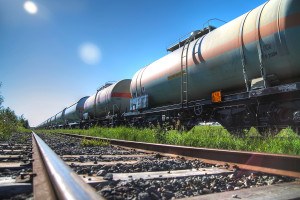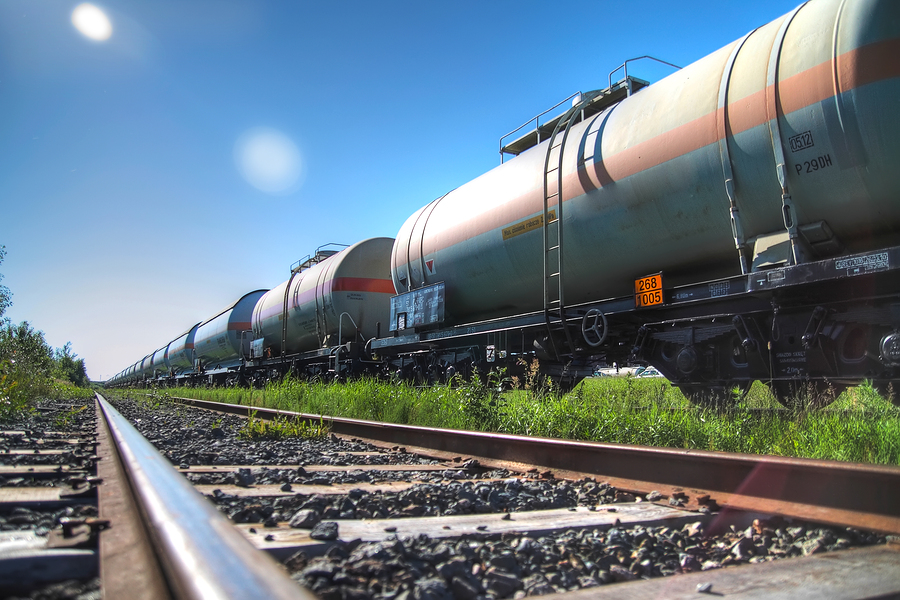U.S. railroads on Thursday urged regulators to improve safety standards for tank cars carrying flammable liquids, following a spate of accidents in the booming crude-by-rail industry.
Most old tank cars must be phased out, and even new cars will require modifications, the Association of American Railroads said in a filing to the U.S. Pipeline and Hazardous Materials Safety Administration, just days after a train carrying oil derailed in Alabama.
The proposal, which could cost the tank car industry more than $3 billion according to Reuters estimates, is the first move in a battle between railroads and car owners that ship goods on their lines.
Higher costs could also temper the growth of crude-by-rail, following a number of high-profile accidents.
A 90-car crude train derailed and exploded in western Alabama on Friday, rupturing a number of tank cars and spilling oil into a trackside wetland area. It is not clear what type of tank cars were involved in that crash.
In the summer, a Canadian train derailed in the Quebec town of Lac-Megantic, killing 47 people. The accident prompted a drive for tougher standards for rail car shipments. The Canadian train was made up of DOT-111 cars, which carry liquids. The U.S. National Transportation Safety Board has said older models of DOT-111 are vulnerable to leaks and explosions.
“It’s time for a thorough review of the U.S. tank car fleet that moves flammable liquids, particularly considering the recent increase in crude oil traffic,” said AAR President Edward Hamberger.
WITHSTAND THE BLOW
Rapid proliferation of crude-by-rail shipments started more than three years ago, as pipeline infrastructure lagged booming U.S. and Canadian crude production.
In the third quarter, U.S. shipments rose 44 percent to 93,312 carloads, equivalent to about 740,000 barrels per day or almost a tenth of U.S. production.
The increase has been a boon for U.S. railroads which have lost coal shipments as more U.S. power plants move over to natural gas.
Some analysts say the railroad industry proposal could be a crippling expense for the tank car sector and could reduce the benefits of shipping crude by rail. A number of DOT-111 cars were upgraded in 2011 to meet stricter guidelines.
“The railcar industry could not withstand this blow,” said Toby Kolstad, an analyst at freight car consultancy Rail Theory Forecasts in Portland, Oregon.
“Who pays for all those cars that were built and have to be replaced?” he said.
Other industry stakeholders are due to offer suggestions on improving rail safety in the coming weeks and then regulators will set a course for the sector.
Some analysts said that while the total cost for compliance could be high, the burden would be small when spread across the entire sector.
“There would be an impact with cars unavailable during retrofitting, but that’s short term,” said Samir Kayande, an energy analyst at ITG Investment Research. “In the big picture, the cost doesn’t strike me as meaningful.”
About 92,000 tank cars are moving flammable liquids, with about 78,000 of those requiring retrofit or phase out, the AAR said in its proposal to the PHMSA. It said 14,000 newer tank cars complied with the latest industry safety standards but should still be modified. The AAR did not propose a timeline for the replacements or request that they all be done at once.
Many of the proposed changes are meant to prevent explosions of the kind seen in Alabama on Friday. New cars should include a steel jacket, thermal protection and pressure relief valves, the AAR said. Even cars built since October 2011, when the rail industry brought in its latest design standards, will need modifications.
The cost of meeting similar standards, including steel jackets and pressure relief, could exceed $40,000 per car, Rail Supply Institute said at an industry presentation earlier this year. RSI expects to update its estimates soon.
At that rate, just the cost of refitting the 78,000 old cars would top $3 billion, although some of those old cars will be retired if the AAR proposals are taken up.
The AAR defended its proposals on Thursday and said it would not impact crude transport.
“If we’re doing this right, it’s not going to cause a dislocation,” Hamberger said. “There’ll be plenty of crude to go around.”
(Reporting by Edward McAllister; Editing by Lisa Von Ahn and David Gregorio)
Was this article valuable?
Here are more articles you may enjoy.


 Billionaire NFL Owner Suing Over Billboards Near His SoFi Stadium
Billionaire NFL Owner Suing Over Billboards Near His SoFi Stadium  Storm Goretti Batters Europe With Violent Winds, Power Cuts
Storm Goretti Batters Europe With Violent Winds, Power Cuts  US Lawmaker Unveils Bill Requiring Manual Car-Door Releases
US Lawmaker Unveils Bill Requiring Manual Car-Door Releases  Singer’s Elliott Sued by PE Firm in Escalating Fight Over Money
Singer’s Elliott Sued by PE Firm in Escalating Fight Over Money 